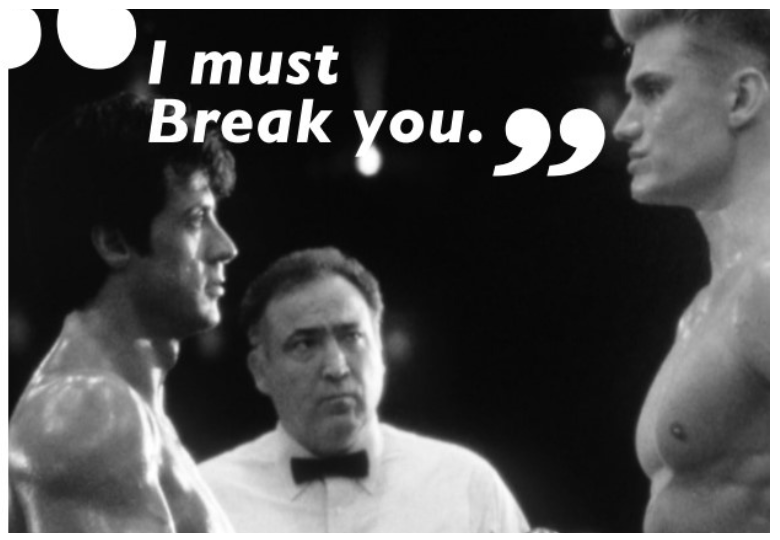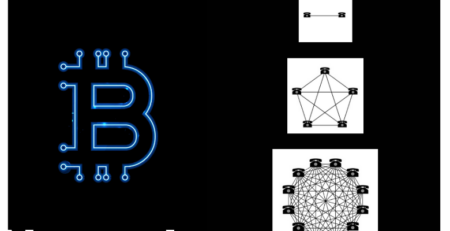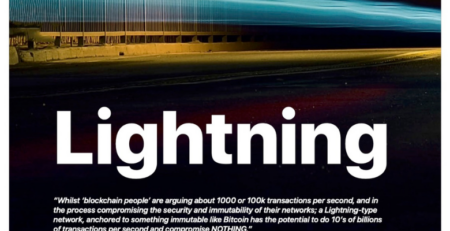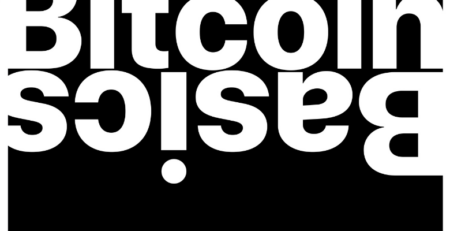Breaking the Blockchain
Blockchain Doesn’t Work.
About halfway through a few of last year’s talks, I presented what I called “the new formula”.
A formula, that if dismissed as an experiment, and allowed to grow large enough; would lay the foundation for a new form of global collaboration, consensus, value storage & transfer – but only if we take all the elements in combination!
This formula, this recipe would come to yield something that is:
– Technically & socially secure
– Natively Digital & Globally distributed
– Shut down & censorship resistant
– Practically immutable
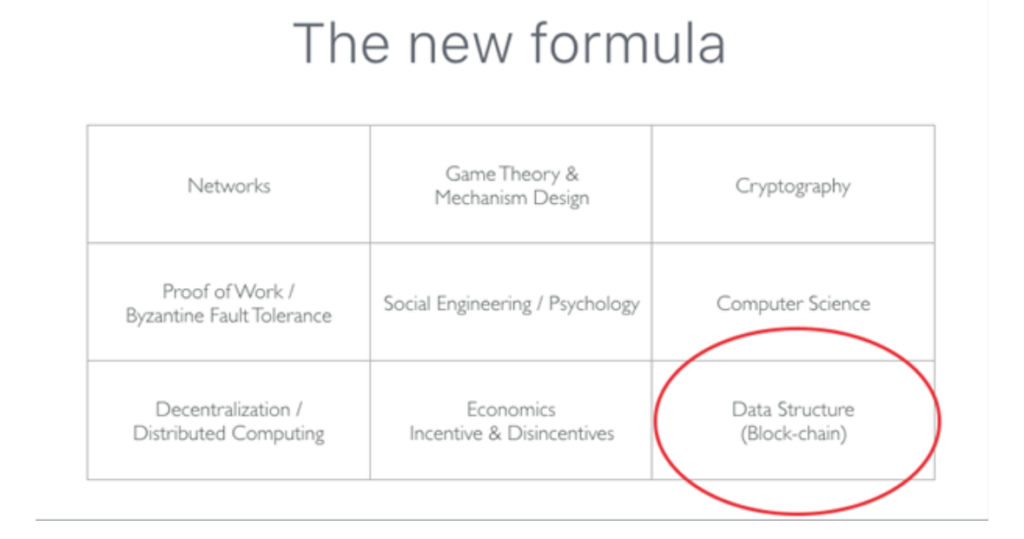
And as a result of maintaining the sanctity of the above attributes, this formula would also produce something that was, relatively speaking; slow, very expensive to run, and limited in “direct” scope (much like the internet – the only thing the actual internet can do is route packets of “dumb” data).
What do I mean by direct scope?
Well – it’s the number of things this formula can and should be used for, and that includes:
– Verifiable Digital Scarcity
– A Secure, unconfiscatable Monetary Unit
– A Self Sovereign, Digital Store of value, and
– A Global, Immutable, Digital Settlement Network
But here’s the kicker.
What we can then build with the above, and on top of the above – is endless.
Much like language, and the internet. Simple rules (ie; protocols) create a solid foundation. This gives you the opportunity to build infinite complexity on top.
So where did Blockchain go wrong?
In short: A complete lack of contextual understanding – both on a Macro & Micro level.
But let’s explore 3 key points:
1. Context (Scrambled Eggs)
2. Focus (The innovation is autonomous immutability)
3. Overkill (Rube Goldberg)
#1. Context
First of all, what I like to call “the scrambled eggs theory”.
The “blockchain” ingredient on its own does NOT give you any of the attributes we discussed earlier.
Security & immutability are not some inherent traits that magically appear “thanks to Blockchain”.
Security is a function of cost, and comes as a result of all of those ingredients combined.
In fact, anyone who tells you otherwise, has probably convinced themselves that a great cake is made with only one ingredient, eg: Eggs.
And that they could make you a “better” cake, if they whisked the eggs much faster.
The reality is they’re not selling you cake; they’re selling you scrambled eggs.
I’m sorry – but that’s not how things work.
Taking the one ingredient out of context, does not yield the same result.
#2: Focus
The innovation here is autonomous consensus!
Removing intermediaries means just that. If it must be run by some entity or ‘trusted’ institution, it just reinforces its inherent uselessness. There is ZERO reason to use a blockchain if someone is managing it.
It’s a much more practical approach to just build a tech product that solves the problem – there is NO NEED to slow it down by creating excess redundancy, especially when there is no actual disintermediation of a managing party!
You end up with the worst of both worlds.
#3: Overkill
You could be in the other camp that says:
“We agree blockchain is that entire recipe, we just use the term for shorthand. We just believe it should be used everywhere”.
I’m here to tell you that taking the entire recipe and applying it to anything other than the four “direct applications” I mentioned above is complete overkill. There is nothing as critical to the function of society as money or value transfer (as I’ll explain later), that could justify or require such an expensive method of disintermediating central authorities.
I mean – the very essence of ‘bad acting’ or ‘stealing’ is related to money (or value). A major reason why the institutions we trust to manage money exist in the first place, is that maintaining some form of integrity in the money we use to represent our labor is the foundation of our ability to cooperate as a species.
Bitcoin is simply a better way to do this – and places that guarantee of integrity into code, backed by math, and agreed to via broad participatory consensus.
So to sum up, we really only have two situations when it comes to Blockchain.
(summed up by my sophisticated chart below)a) Blockchain Alone
If we take one ingredient out of the recipe, or even just combine it a couple of the others, for example the distributed computing part (DLT as it’s now being touted as), it’s a complete waste of time & the fact that it must be run by some consortium or trusted institution just reinforces its inherent uselessness.b) The entire recipe
On the other hand, for anything other than what I described above, ie; Money or a settlement network; it’s a Rube-Goldberg machine. It’s too expensive, and if we needed that level of validation for everything we do as a society, then nothing would function anyway.
People, groups, companies, entrepreneurs, etc are generally trustworthy & doing the right thing most of the time. We don’t need “everything on a blockchain”.
The issue lies with groups or institutions that have disproportionate power, that have abused that power & that have very little (or no) skin in the game, and whilst there are less of those in number; they create distortions in society due to their size and ability to tamper with the core resource for human collaboration.
A network such as Bitcoin, that reinvents, codifies and liberates something as important as money (like the internet did for information/communication) changes the game for the better by re-introducing symmetry. But it’s expensive, and as I’ve stated, there is nothing else as mission-critical in the world that warrants the application of this formula to be successful.
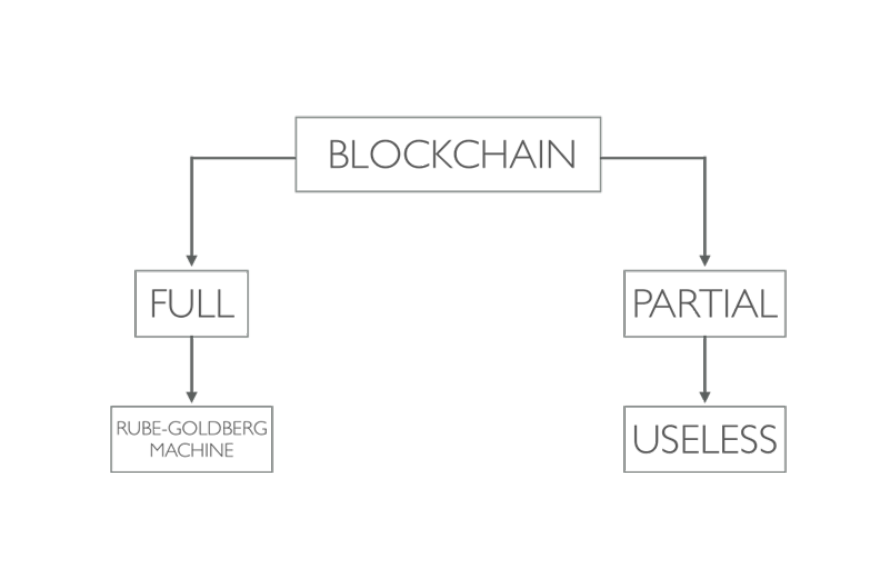
Blockchain’s broken promise
The promise of blockchains, that would solve all the world problems came in the form of TWO key attributes:
● Security
● Immutability
That was it. Game. Set. Match.
Let’s now use it everywhere!
The problem with this conjecture, as we established above, is that blockchains are not mysteriously endowed with these attributes because of their unique technical architecture. In fact, there is NOTHING unique about blockchain architecture. It’s just chunks of data, segmented, and chronologically connected – and these days supposedly across multiple servers (in the case of the new buzzword: DLT).
Let me be clear. This does NOT give you anything that’s secure.
Security & Immutability are a derivative of COST.
And cost only comes from combining ALL the ingredients in the recipe (as discussed earlier).
Bitcoin is different.
Why?
Bitcoin is the most secure, public, digital network we have – not because it’s “built on a blockchain”, but because it combines that form of database architecture (I’ll call it that, because that’s what it is), with a robust, game-theoretically sound economic model, with a well thought out incentive & disincentive mechanism, and Proof of Work, which solves the Byzantine generals problem in a distributed (or decentralized) system and introduces the game theory.
On other words; Bitcoin is secure & immutable BECAUSE it has a currency baked into the protocol, that is priced by the free market, where its value is inextricably linked to the security of the network by incentivizing each of the participants of the network (whether validators, judges, users, etc) economically.
It’s in everyone’s self (and therefore collective) interest to maintain the integrity of the ledger (micro) and network (macro).
It is probabilistically sound, and becomes more-so with time – this means it’s lindy compatible and is the most robust form system you can have.
That’s the innovation – an autonomous network, that’s made up of participants at multiple layers, all with skin in the game.
Not “blockchain” or “DLT”.
The Limestone Analogy
When people get up & begin to talk to me about how they’re going to use the blockchain to solve supply chain, or whatever other (mostly ridiculous) idea they have, it reminds of someone who just discovered that limestone aggregate in concrete makes for better strength & better overall properties in concrete; so they then apply it to everything else:
● They put some limestone in their green smoothie
● On their avocado & toast
● In their latte
● As a back rub on their partner’s skin
● And even as fuel in their car
Why?
Because of course: it makes everything better!
It’s preposterous.
And it can only come from people who have a thin veneer of an ideology that they’ve adopted, without either being able to understand, or even bother to actually understand what’s actually going on.

